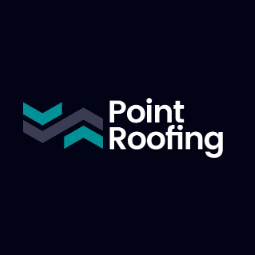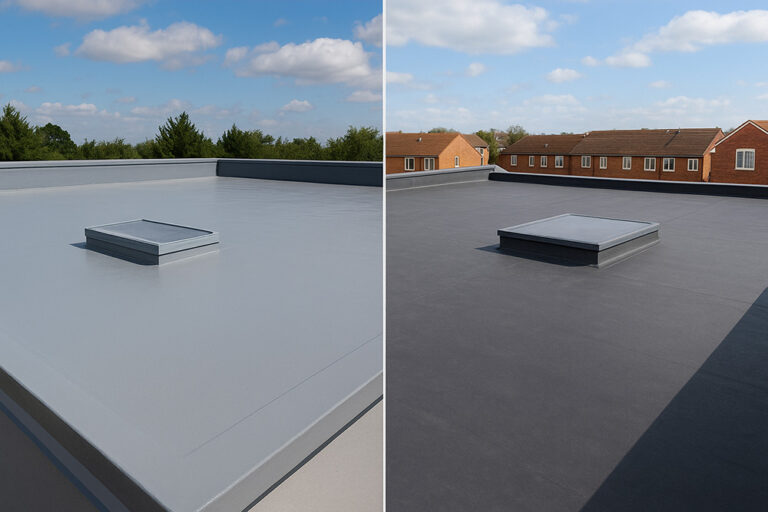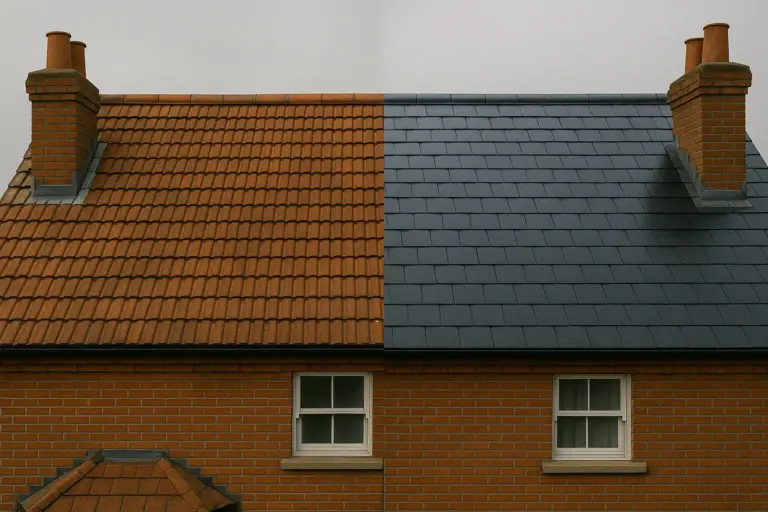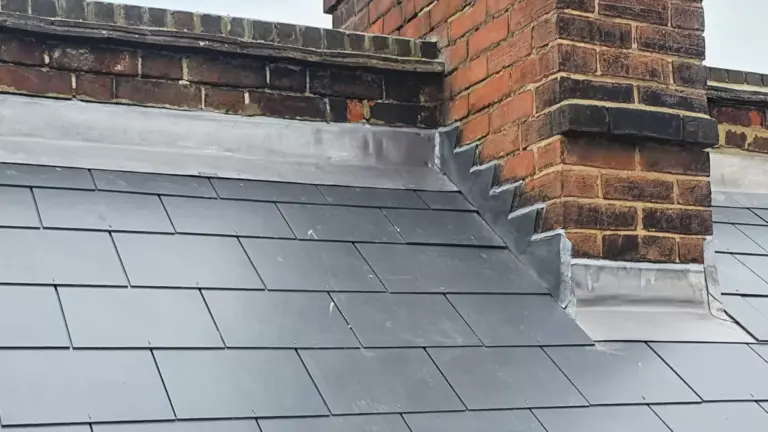Pitched roofs are a defining feature of British homes, known for their practicality, charm, and ability to brave unpredictable weather. While tiles or slates often attract the most attention, what’s underneath matters just as much. Advances in roofing technology have introduced the breathable membrane—a modern layer bringing new levels of protection and performance to classic construction.
What Is a Breathable Membrane?
A breathable membrane is a specially designed synthetic sheet installed beneath tiles or slates, creating a barrier against water while allowing moisture vapour from inside the home to escape. Unlike traditional felt, which blocks both water and vapour, this material is vapour-permeable yet water-resistant.
Here’s how it works:
- Waterproof on the outside: Shields the roof structure and interior from rain, snow, and wind-driven moisture.
- Breathable from the inside: Lets internal moisture vapour pass through, reducing the risk of condensation.
It’s a simple upgrade with wide-reaching implications for any home, especially during re-roofing projects.
The Problem With Traditional Roof Underlays
Older roofs frequently rely on bituminous felt as the secondary layer beneath tiles or slates. While robust in past decades, these felts create a virtually impermeable barrier, trapping moisture vapour that inevitably occurs in inhabited spaces.
The consequences can be subtle at first, but build up over time:
- Condensation: As warm, moist air from inside rises, it meets the cold underside of the felt. Condensation forms, dripping onto rafters, insulation, or even ceilings.
- Timber decay: Persistent moisture increases the likelihood of fungal rot, especially in older timbers.
- Insulation performance: Wet insulation loses much of its effectiveness, translating to higher heating bills and less comfort.
- Mould and indoor air quality: Mould growth in the loft can spill into living spaces, triggering allergies and health issues.
Technological progress has moved well beyond these impermeable felts, offering real benefits without raising costs disproportionately.
Key Advantages of Breathable Membrane in Pitched Roofs
Incorporating a breathable membrane during re-roofing brings several interconnected benefits, reshaping how the entire building fabric functions.
1. Superior Moisture Management
The most immediate improvement comes from allowing water vapour out, but not in.
- No trapped condensation: Everyday activities—cooking, bathing, breathing—release water vapour. With breathable membrane, this moisture has an escape route.
- Dryer roof space: A drier loft or attic slows timber decay and combats mould growth.
Providing this two-way protection extends the lifespan of the building structure itself, often by decades.
2. Warmth Retention and Stable Insulation
Any moisture in insulation can falter its thermal resistance. A dry insulation layer remains at peak performance, keeping homes cosy in winter and cool through the summer.
- Consistent U-values are easier to achieve and maintain.
- Lower energy bills become possible by reducing the demand on heating systems.
The significance of insulation performance only continues to rise, given stricter building regulations and higher expectations around environmental impact.
3. Improved Air Quality
A moist roof void is the perfect environment for spores, dust mites, and bacteria. By keeping the roof cavity dry, breathable membranes cut the risk of mould migration into rooms below.
People with asthma or sensitivities benefit the most, but every household enjoys fresher, healthier air without persistent odours or that unmistakable musty smell of damp.
4. Enhanced Longevity for Roofing Materials
Timbers, fasteners, and even under-tiles films are susceptible to rot and corrosion when exposed to moisture over extended periods. By promoting rapid evaporation and blocking external moisture intrusion, these hidden elements attain a much longer service life.
Repairs become less frequent, maintenance intervals stretch further apart, and future reroofing projects can be delayed for years, even decades, beyond the typical schedule.
5. Support for Modern and Heritage Roofs
Not all homes and buildings are alike. Breathable membranes are versatile, proving equally at home beneath clay tiles in period cottages or modern concrete tiles on contemporary builds.
Roofers can often install them without altering the outward appearance, meeting conservation or planning requirements while securing all the internal benefits.
Comparing Traditional and Breathable Underlays
Choosing between conventional roof felt and a modern breathable membrane is about more than just price per roll. It’s a decision that shapes the internal environment and the longevity of every component above the ceiling.
Here’s a table comparing crucial properties:
Property | Traditional Felt | Breathable Membrane |
|---|---|---|
Water resistance | High | High |
Vapour permeability | Very low | High |
Roll weight | Heavy | Lightweight |
Ease of handling | Difficult (prone to tearing) | Straightforward |
Lifespan | 10-20 years | 30+ years |
Compatibility | Limited (not all roofs) | Suitable for most roofs |
These fundamental differences ripple through the performance and maintenance lifespan of the entire system.
The Process of Re-Roofing With Breathable Membrane
Re-roofing is a significant investment, often necessary when tiles or slates show their age or leaks appear. Incorporating a breathable membrane during this time is straightforward and doesn’t require major structural changes.
A typical installation involves:
- Stripping old layers All tiles, slates, battens, and old underlays are removed, right down to the rafters.
- Inspecting and repairing the structure Any rotten or damaged wood is replaced, safeguarding against future problems.
- Laying the breathable membrane The sheet is draped over the rafters, overlapped meticulously at joints, and fixed in place. Modern membranes are tailored for easy handling and precise fitting.
- Fixing battens and re-tiling Battens are installed over the membrane, followed by the chosen tiles or slates.
- Final checks and weatherproofing Edges, ridges, and abutments are sealed or flashed, ensuring a watertight finish.
The whole process fits snugly within established roofing workflows, adding minimal time to the job.
Points To Consider During Specification
Selecting the right type of breathable membrane isn’t simply about picking any product off the shelf. Here are a few factors that should influence the final decision:
- Vapour resistance (SD value): Different membranes are rated for how much moisture they allow through. Lofts with minimal ventilation may need a particularly high-permeability membrane.
- Tiling method: Some products are better suited to certain tile types or fixing systems.
- UV and heat resistance: In certain exposed applications, additional resistance to sunlight or warmth might be advisable.
- Certifications: Look for membranes that carry BBA (British Board of Agrément) or equivalent approvals.
Qualified roofing contractors are well-versed in matching membrane specification to home and climate, ensuring optimal outcomes every time.
Compliance with Updated Building Regulations
Re-roofing isn’t simply an opportunity to upgrade materials; it may be required under law to meet current standards. Breathable membranes play a significant part in compliance:
- BS 5534: British Standard for slating and tiling, which stipulates the use of vapour-permeable underlays.
- Part L (Conservation of fuel and power): Energy efficiency depends on dry insulation and sealed envelopes.
- Health and safety requirements: Managing condensation and mould risks is key to meeting obligations under the Housing Health and Safety Rating System (HHSRS).
Anyone commissioning roof work should consult with local authorities or building professionals to ensure all requirements are met, avoiding costly corrections and disputes.
Longevity, Safety, and Peace of Mind
A roof built or refurbished to last reduces disruption, unscheduled expenses, and the anxiety of unexpected leaks. Breathable membranes work quietly behind the scenes, performing for decades without fuss.
Beyond the technicalities, there’s reassurance in knowing the home is protected from within—and that future generations will inherit a structure that is sound in both its substance and its health-promoting qualities.
Economic Value of Upgrading During Re-Roofing
Opting for a breathable membrane can affect the bottom line in more ways than one. While costs may be marginally higher than conventional felt at the purchasing stage, savings accumulate over time:
- Extended intervals between major repairs
- Lower energy usage by maximising insulation performance
- Preserved condition of roof timbers and structure, reducing need for replacements
- Better indoor environments lead to greater property value and occupant satisfaction
For anyone planning to remain in their home for the long-term, these are investments worth considering seriously.
Environmental Considerations
Sustainability is a growing concern, and the roofing sector is making strides toward greener solutions. Many modern breathable membranes are fully recyclable, and their role in preserving insulation efficacy means they contribute indirectly to reductions in carbon emissions from heating.
Choosing a membrane that meets eco-certifications and minimises embodied energy is easier than ever, offering a small but meaningful step towards more responsible construction.
Professional Insights and Ongoing Innovations
British roofing professionals increasingly recommend breathable membranes not just for regulatory compliance, but for the tangible improvements homeowners notice after the work is finished. The quiet loft, the consistent warmth indoors, and the absence of odours or mould are more than technical details—they’re marks of a home that performs as well as it looks.
The field doesn’t stand still, either. Research continues to fine-tune the balance between robustness and permeability. As the science advances, so too do the benefits, promising homes that are not just weather-resistant, but genuinely comfortable, efficient, and safe.
It’s fair to say that re-roofing with a breathable membrane is no longer seen as a luxury or an optional extra. It represents good sense, good science, and good stewardship of your property for years to come.






